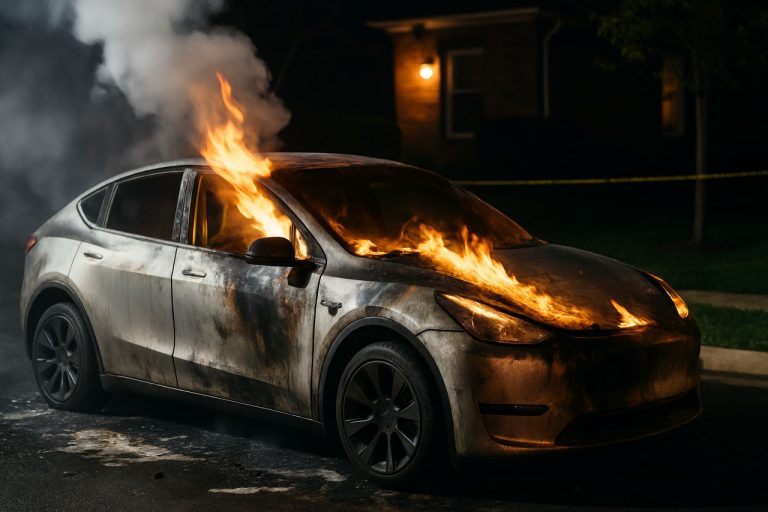
- SUVs, once celebrated for their power and comfort, are now scrutinized for reliability and sustainability as consumer priorities shift.
- Compact SUV sales are rising, reflecting a move towards more economical and practical vehicle choices.
- The Volkswagen Taos faces skepticism despite new enhancements, highlighting concerns about mounting costs and reliability.
- Ford Explorer, although average in maintenance costs, struggles with subpar ratings in the midsize SUV category.
- Jeep’s Grand Cherokee models suffer from poor fuel economy and reliability, overshadowing their off-road capabilities.
- Land Rover Discovery’s high upkeep costs weaken its dual-natured appeal, despite luxury and off-road excellence.
- Volvo XC60 Plug-in Hybrid’s cutting-edge appeal is marred by reliability issues, complicating its eco-friendly narrative.
- Jeep Wrangler’s iconic design is overshadowed by recurring system issues, appealing mainly due to nostalgia.
- The Hyundai Tucson struggles with reliability, prompting concerns among prospective buyers.
- As the industry shifts towards efficiency and sustainability, 2025 could be pivotal in re-defining the SUV landscape.
SUVs have long reigned supreme on American roads, celebrated for their salacious blend of rugged functionality and spacious comfort. Yet, as the wheel of time turns toward 2025, the glistening sheen of some SUV models begins to dull. The promise of a larger, mightier vehicle, once the siren call for families and adventurers alike, is now under scrutiny as the industry faces a crossroads: reliability versus allure.
A swift glance at the market suggests a shift in consumer priorities. Once a status symbol for power and dominance, SUVs are now being re-evaluated through the lens of sustainability and dependability. Kelley Blue Book reports an uptick in sales for compact SUVs, a reflection of consumers seeking more economic and practical choices against the backdrop of diminishing patience for unwieldy and costly repairs.
The Volkswagen Taos returns to the mechanic’s spotlight yet again. A revamp for 2025 hasn’t dispelled the cloud of skepticism hovering over it, despite a potent new engine and sleek tech upgrades. One has to ponder, does a jazzy infotainment system justify the mounting cost and inconsistent reliability?
Standing at the forefront of hefty repairs, the Ford Explorer continues to bear the brunt of questionable lease deals. Despite boasting average maintenance costs, its mediocre rank amongst midsize SUVs urges potential buyers to tread with caution.
Jeep grapples with its legacy as the synonymous brand for utility and ruggedness continues to falter. The Grand Cherokee and its elongated sibling, the Grand Cherokee L, wear the weight of abysmal fuel economy and reliability scores. Even their terrain-tackling prowess seems not enough to offset the pulsating frustration of persistent breakdowns.
Meanwhile, the Land Rover Discovery remains a paradoxical marvel. Built to conquer the wilderness, its luxury confines stifle under the urban sprawl. The costly upkeep gnaws away at its prestige, reminding owners of the impracticality of maintaining this dual-natured beast on a daily commute.
Volvo’s XC60 Plug-in Hybrid momentarily holds our gaze with cutting-edge hybrid allure, yet its questionable reliability ratings complicate its eco-friendly narrative. As an industry darling, experts hope its evolving technology in the new year patches past pitfalls, yet rationality urges consumers to tread prudently.
Not to be left behind, the Jeep Wrangler pushes forward with its iconic design. However, recurrent issues with fundamental systems suggest a proposition weighed heavily by nostalgia, rather than modern-day efficacy.
Then there’s the Hyundai Tucson, lurking in the shadows of its predecessors’ triumphs. The murmur of “ticking time bomb” heard among industry experts, owing to engine and transmission ghosts, provokes wary introspection from potential buyers.
Each of these SUVs offers a compelling blend of style, power, and utility. Yet, today’s discerning buyer seems increasingly unwilling to barter reliability and cost for the fleeting allure of size and power. As the automotive industry steers into a future dictated by efficiency and sustainability, 2025 might just mark the year of change, as consumers reassess what it truly means to ride in style.
The 2025 SUV Dilemma: Are Reliability and Sustainability the Future of Driving?
As the SUV landscape evolves towards 2025, both manufacturers and consumers face crucial questions about the balance between power, prestige, and dependability. With a growing emphasis on sustainability and reduced maintenance costs, the industry is at an exciting yet challenging juncture. Here are some deeper insights, market forecasts, and actionable recommendations to navigate this shifting terrain.
Key Insights and Analysis
The Rise of Compact SUVs
The shift in consumer preferences towards compact SUVs is significant. These models offer a balance of space, functionality, and improved fuel efficiency. Compact SUVs are often built on shared car platforms, which can help reduce manufacturing costs and pass these savings on to the consumer in the form of lower prices and better fuel economy. Noteworthy entries include the Toyota RAV4 and Honda CR-V, which consistently perform well in terms of reliability and owner satisfaction.
Volkswagen Taos: Advancements and Concerns
While the Volkswagen Taos aims to impress with a stronger engine and advanced infotainment, these upgrades must address persistent reliability issues persuasively. Potential buyers are encouraged to consider warranty coverage options that support potential future repairs.
Ford Explorer: A Cautionary Tale
The Ford Explorer continues to face challenges with consumer trust, partly due to its leasing strategies and average reliability ratings. For consumers eyeing an Explorer, negotiating a robust warranty or support package might mitigate long-term costs.
Jeep Grand Cherokee: Rugged but Costly
Jeep’s reputation for off-road capability remains, yet its poor fuel economy and reliability may deter practicality-minded buyers. Jeep enthusiasts should weigh the value of terrain-tackling capabilities against ownership and maintenance costs, possibly considering hybrids or alternative models that offer similar robustness with lower operational expenses.
Land Rover Discovery: Luxury vs. Practicality
With its dual appeal of luxury and off-road prowess, the Discovery’s high maintenance costs are a significant consideration. Luxury SUV shoppers should compare long-term total costs of ownership before committing.
Volvo XC60 Plug-in Hybrid: The Green Gamble
Volvo represents a broader industry trend towards hybrid and electric vehicle options. While this model has a sophisticated appeal, assessing the evolution of its drivetrain technology and market incentives, like tax credits, should factor heavily into purchase decisions.
Jeep Wrangler: Nostalgia vs. Modern Needs
Known for its iconic design, the Wrangler suffers from ongoing issues with mechanical systems. It’s essential for buyers, especially those drawn by nostalgia, to evaluate current technological offerings and improvements objectively.
Hyundai Tucson: Buyer Beware
With warnings from experts about mechanical issues, new buyers should monitor reviews of the 2025 model year’s performance. Proactively considering extended warranties might offer peace of mind.
Industry Trends and Future Predictions
1. Sustainability Focus: As regulatory pressures and consumer demand for greener vehicles increase, automakers are likely to invest more in hybrid and electric technologies.
2. Technological Integration: Expect more SUVs equipped with advanced driver-assistance systems (ADAS) and connectivity features to remain competitive and cater to safety-conscious buyers.
3. Personalization and Diversity: Car manufacturers may offer more customizable options to appeal to diverse consumer tastes and geographical preferences.
4. Transition to Subscription and Car Sharing Models: Long-term ownership may give way to flexible lease and car-sharing options, minimizing the financial burden for drivers and reducing environmental impact.
Actionable Recommendations
– Do Your Research: Prospective buyers should focus on models with proven reliability and positive consumer reviews. Reviews from trusted platforms like Kelley Blue Book and Consumer Reports can provide critical insights.
– Negotiate Warranty Coverage: Comprehensive warranties or service packages can mitigate repair costs, providing a substantial buffer against potential future issues.
– Consider Fuel Efficiency: Opting for hybrid or plug-in hybrid models can offer long-term savings, especially in areas with volatile fuel prices.
– Stay Updated on Incentives: Many regions offer incentives for hybrid or electric vehicles, potentially lowering the overall purchase cost.
For more insights and latest trends on automotive industry dynamics, visit the main site of Kelley Blue Book for expert reviews and comparisons.
In conclusion, the SUV market of 2025 presents a panorama of change. By focusing on reliability, sustainability, and informed decision-making, consumers can enjoy the benefits of both practicality and innovation in their driving experience.



